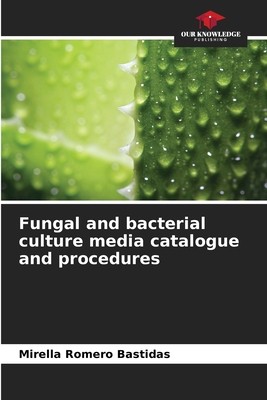
- We will send in 10–14 business days.
- Author: Mirella Romero Bastidas
- Publisher: Our Knowledge Publishing
- ISBN-10: 6206667162
- ISBN-13: 9786206667162
- Format: 15.2 x 22.9 x 0.4 cm, softcover
- Language: English
- SAVE -10% with code: EXTRA
Fungal and bacterial culture media catalogue and procedures (e-book) (used book) | bookbook.eu
Reviews
Description
Over time, micro-organisms such as bacteria and fungi have acquired the ability to constantly evolve, due to the constant bombardment of adverse effects from biotic or abiotic factors. Many of these micro-organisms have changed their biology and/or selection of nutrients for their diet. This response has meant that techniques aimed at studying their development and nature have also had to be modified or changed. Such is the case with the use of culture media, which have greatly aided the processes of analysis and identification of infectious agents within the area of microbiology. Currently, new substrates or carbon sources necessary for the optimal development of specimens to be evaluated have emerged. In this document, the name and methodology of different types of culture media commonly used in laboratories are presented, as well as others that work more specifically in the expression of certain microorganisms such as bacteria or fungi. It is hoped that their use will be of great support in the different techniques used.
EXTRA 10 % discount with code: EXTRA
The promotion ends in 16d.20:59:04
The discount code is valid when purchasing from 10 €. Discounts do not stack.
- Author: Mirella Romero Bastidas
- Publisher: Our Knowledge Publishing
- ISBN-10: 6206667162
- ISBN-13: 9786206667162
- Format: 15.2 x 22.9 x 0.4 cm, softcover
- Language: English English
Over time, micro-organisms such as bacteria and fungi have acquired the ability to constantly evolve, due to the constant bombardment of adverse effects from biotic or abiotic factors. Many of these micro-organisms have changed their biology and/or selection of nutrients for their diet. This response has meant that techniques aimed at studying their development and nature have also had to be modified or changed. Such is the case with the use of culture media, which have greatly aided the processes of analysis and identification of infectious agents within the area of microbiology. Currently, new substrates or carbon sources necessary for the optimal development of specimens to be evaluated have emerged. In this document, the name and methodology of different types of culture media commonly used in laboratories are presented, as well as others that work more specifically in the expression of certain microorganisms such as bacteria or fungi. It is hoped that their use will be of great support in the different techniques used.


Reviews